Improving muscle strength as a cyclist through the incorporation of strength training, reduces injury rates, whilst improving power and efficiency on the bike. So, in this article I will provide a scientific backed framework behind the rationale of strength training for cyclists, while providing insights on how to integrate strength training into your cycling training plan. Moreover, the structure of this article will provide you with a broad understanding of strength training, followed by scientific insight on the benefits of strength training.
Before delving into the science of the importance of strength training for cyclists, recall to the previous articles on base and core training during the cold or rainy winter months as a sensible and logical training option to improving fitness and muscle deficiencies. As such, the practical approach to achieving greater heights as a cyclist is to, “train to ride, and not ride to train” [1]. Fundamentally, to get stronger as a cyclist, you must train off the bike in the form of strength training contrary to the misconception that ‘riding creates a better cyclist’.
It is therefore plausible that many cyclists are concerned about muscle mass decreasing performance, but is strength training really vital as a cyclist?
Well, let’s use the above misconception that ‘riding creates a better cyclist’ to validate the importance of strength training:
To become skilled at any hobby, talent, or sport – practice – ‘makes perfect’. Most notably, the well-known 10,000-hour rule – a promising concept born from Anders Ericsson is often misinterpreted by the broad population [2]. In his studies, Ericsson establishes that deliberate practice leads to skill performance of a specific task. However, while in theory that ‘practice makes perfect’, Ericsson notes that athletic development must be treated with an abstract lens, for that skilled practice must be viewed as a separate entity to improving physiological, muscular, and powerful performance.
Yes, cycling will improve aerobic fitness, skill, and bike handling to an extent, nonetheless improving muscle strength is limited [2]. The same way an elite football player is highly skilled whilst athletically developed to withstand the demands of a match, in the same manner should a cyclist incorporate strength training.
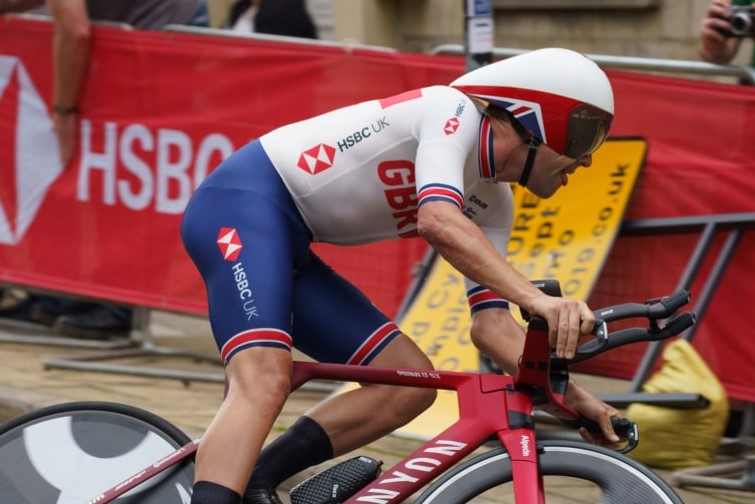
Why Strength Training is Important for Cycling
Strength training for cyclists is an important factor to one’s training routine. When incorporating strength training, most often, cyclists can detect the immediate benefits of increased muscle strength and the ability to produce greater power or nail the most popular Strava KOM or climb. However, there are some invisible benefits to strength training that are often overlooked, and that is, bone hypertrophy and development. Therefore, in this section the article I will provide both the visible and invisible benefits of strength training for cyclists.
Reason 1 – Dynamic Development of Muscle Fibres
The human body is comprised of eleven different organ systems that work synchronously to ensure healthy functioning, with the musculoskeletal system contributing as one of the eleven bodily organ systems [3]. Muscle within the human body is further categorised into skeletal, cardiac, and smooth muscle [3]. The skeletal muscle plays an important role by attaching to bones and tissue to produce movement [3]. For this reason, skeletal muscle allows for movement production, the control of the respiratory system, posture and regulating balance, and many more functions [3]. In effect, without adequate strength and functioning of skeletal muscle, the ability to produce quality movement is likely to diminish.
Now that we have established the importance of the musculoskeletal system as a primary organ that makes up the functioning of the human body, it’s time to explore the different types of muscle fibres that contribute to the athletic performance of a cyclist.
Generally, muscle fibre types are categorised into two types – slow twitch and fast twitch fibres [4]. To the human eye, slow and fast twitch fibres can be differentiated by the colour of the fibre visible through a microscope. The slow twitch fibres are depicted by the red appearance due the available oxygen content, while the slow twitch fibres appear white in colour due to the lack of oxygen content.
In essence, the terms ‘slow and fast twitch’ suggest the characteristics of the muscle fibres acting as slow or endurance in nature, and fast or powerful in nature [4]. Importantly, the unique genotype in humans determine the muscle fibre makeup in everyone [4]. In fact, the individual limbs of the segments in the human body are assigned to either predominantly slow or fast twitch fibres, or even a mix, depending on their individualised role [4].

Well, let’s further understand the different types of muscle fibres, and how each type of muscle fibre contributes to the performance as a cyclist.
Physiologically, the slow twitch fibres are referred to type I, and the fast twitch are referred to type II fibres [4]. In addition, the type II fibres are further categorised as type IIa and type IIx [4].
Confused? Well, let’s further explain the breakdown of the muscle fibre types so you have a reasonable understanding of why they are important for improved cycling performance.
The slow twitch (type I) fibres that are associated with endurance cycling or aerobic metabolism, are commonly referred to slow oxidative fibres. Meaning, the slow twitch fibres contain large amounts mitochondria cells – cells that act as the ‘powerhouse’ and the ‘brains’ for producing energy [5]. Additionally, slow twitch muscles are confined by large amounts of capillaries and oxidative enzymes [5]. In return, the large amounts of oxidative enzymes deliver great amounts of oxygen to the working muscles [5]. Moreover, the efficiency of slow twitch fibres remain far greater than fast twitch fibres, as they possess less force generating properties, and therefore require less energy for muscle contraction [5].
On the other hand, the fast twitch (type II) are often associated with sprint or track cycling, or anaerobic metabolism, and are referred to glycolytic fibres [5]. As such, the fast twitch fibres contain less oxidativeenzymes compared to slow twitch fibres. However, they remain superior in producing large amounts of force, as they are rich in glycolytic enzymes, which enables the fibres with a great anaerobic capacity [5].
But there’s a catch…
Even though fast twitch fibres utilise anaerobic metabolism, nonetheless the type IIa fibres are often referred to the fast-oxidative fibres [5]. Accordingly, the biomechanical features of the type IIa fibres contain fatigue resistant properties, theoretically categorising them as a hybrid of type I and type IIx fibres [5].
In essence, the biological makeup of everyone is unique, hence the muscle makeup and distribution of muscle fibre types [5]. However, do not be mistaken and accept that improving muscle strength will decrease performance due to the inherent weight gain due to greater muscle mass. In fact, research shows that creating regular stress on the musculoskeletal system can shift fast twitch fibres towards slow twitch [5]. Importantly, stronger cyclists have a greater cross-sectional area within their muscles, therefore allowing substantially greater power outputs compared to the non strength trained cyclists [5].
Reason 2 – Improved Bone Strength, Density and Reduced chance of Injury to Cyclists
Most often, cyclists enter the sport as either a specialised sporting discipline or, as an alternative form of exercise to common contact sports. In its very nature, cycling, is a low impact sport, which often appeals to athletes transferring from contact sport, due to the low impact and therefore decreased chances of developing soft tissue injury or the common ACL injury. However, there is one issue, and that is, exclusively cycling can be detrimental to bone health and formation [6]. Further, believe it or not, but simply cycling without any concurrent strength and conditioning can result in osteoporosis or low bone mineral density [6].
For instance, activities that involve gravitational loading or impact, can stimulate bone density [6]. However, cycling does not involve any ground reaction forces, and minimal gravitational loading on the skeletal system, and therefore cannot stimulate bone density [6].
Yes, cycling is fun, competitive, and disciplining, but there can be the unfortunate occasion of setbacks or injuries caused by accidents that may throw one to the ground. Whilst such injuries contribute to the character building, resilient and disciplined nature as cyclist, it is important understand how to prevent injuries such as bone fractures.
Therefore, through the incorporation of strength training, not only will bone health improve and reduce the chance of fractures, rather the addition of variety is likely to reduce the risk of burnout in the scenario of an injury, and promote an accelerated recovery.
Let’s now appreciate the science behind bone health.
Essentially, bone is composed of various minerals that contribute to its structure [7]. Together, all the present minerals within the bone provide stiffness and strength [7].
However, the underpinning structure of bone is categorised into two subtypes based on their porosity (sponginess) – cortical bone and trabecular bone [7]. In turn, the porosity determines the manner bone absorbs strain and loading [7].
Interestingly, bone growth begins during foetal development, and continues all the way through the end of adulthood [7]. However, once peak bone growth is reached, studies reveal that bone density begins to decrease [7].
Fortunately, the solution to reducing bone loss and improving density is all solved by adding stress to the bones [7]. This process is biologically known as bone remodelling [7]. Remodelling occurs when stress causes the bone to strain, thereby changing both the shape and strength of the bone [7].
Remarkably, bone remodelling follows Wolff’s law, whom German scientist Julius Wolff promoted the notion that bone remodelling is directly caused by forces placed on the bone [7]. As strain exceeds a threshold, new bone begins to be laid down [7]. Accordingly, greater loading will result in greater strain on the bone, thus greater amount of bone laid down [7].
However, Wolff’s law states that less than optimal loading can cause bone to become weaker and brittle [7]. Essentially, the shape and size adaptions of bone is caused by specialist bone cells that are responsible for removing old bone tissue and layering the bone with new bone tissue [7].
So, how is this relevant to cycling?
Well, the answer follows Wolff’s law, where below threshold strains on the bone results in remodelling, often referred to, lazy bone – a common symptom found in cyclists given the absence of ground reaction forces on the bones during cycling [6,7]. However, dynamic loading can produce high levels of strain to the bone to promote stimulus for bone formation [7].
Again, here’s the issue – cycling – is a non weight bearing activity as the majority of the skeletal mass is primarily supported by the saddle, and majority of mechanical stress occurs off the bike, when the skeletal system if forced to react to the nature of their surroundings [7].
However, there is a solution and that is to regularly participate oneself in weight bearing activities to stimulate bone growth [7]. As such, current evidence reveals that individuals involved in regular physical activity build stronger and denser bones compared to the non exerciser [7].
Strength Training for Cyclists – What does the Science tell Us?
Now that you have a broad understanding of how strength training carves out a better cyclist, let’s look at some scientific studies that reveal the obvious benefits of strength training on the performance as a cyclist.
Fundamentally, as you have discovered, weight bearing activities and strength training is vital for improved muscle strength and performance, as well as the benefits for bone health. Ultimately, studies suggest the importance of resistance training for cyclists who exclusively train on their bike [7].
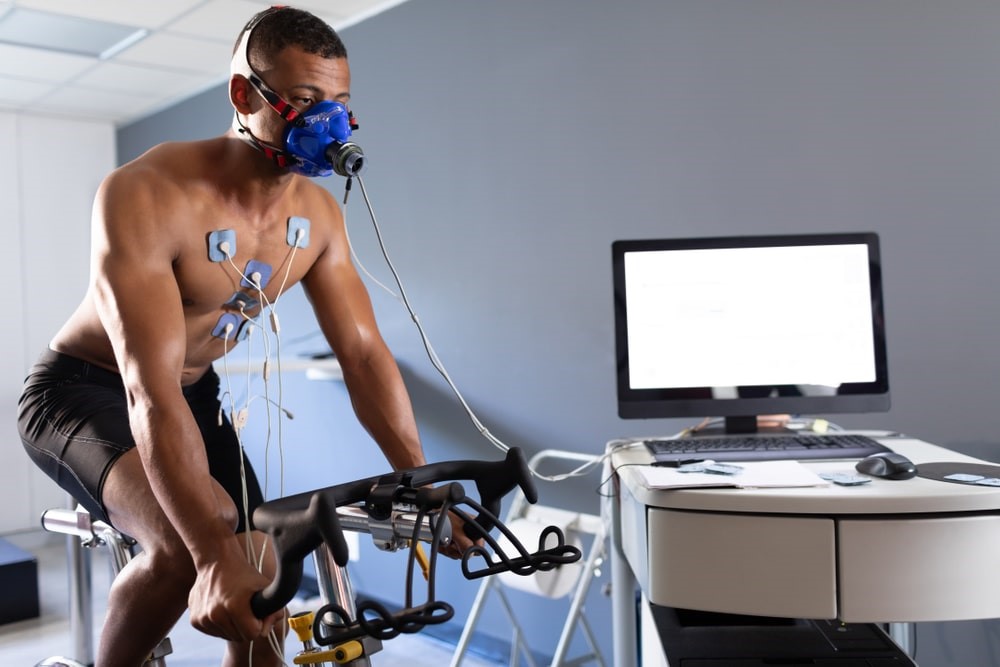
Results from a five-week study focused on endurance athletes, found a significant increase in muscular and biomechanical improvements in the athletes who participated in strength training compared to their non strength training controls [8]. In contrast, the results revealed a significant decrease in maximal strength in the control group, indicating that exclusively cycling is not a substantial tool for improving cycling strength [8].
Furthermore, as cycling is heavily reliant on aerobic metabolism, the study found an improvement in oxygen utilisation in the cyclists assigned to weight training, thereby indicating increased enzyme activity within the muscles and improved cycling economy [8]. Interestingly, for those cyclists concerned about an increase in ‘muscle mass’ effecting their weight this study revealed that weight training does not increase body mass [8].
Given the endurance nature of cycling, where training and events can last for multiple hours upon end, performance is heavily reliant on the aerobic metabolism [9]. Therefore, building a cycling economy is key to performance, and through the application of maximal strength training, cyclists can improve their power output at the cost of less effort [9]. However, there is a catch – and that is to incorporate ‘maximal strength training’, and not muscle hypotrophy [9].
Findings from a study conducted by A. Sunde et al., found that cyclists who participated in a maximal strength training program, achieved a significant improvement in their cycling economy. As such, the study found that time to reach exhaustion during maximal aerobic power testing increased by 17.2% [9]. In turn, A. Sunde et al. found that cycling economy improved due to various factors delaying the onset of muscle fatigue.
In addition, improved cycling economy found in cyclists involved in maximal strength training is suggested to be caused by an increase fast oxidative type IIa muscle fibres, which are inherently stronger than type I muscle fibres, yet more economical than type IIx muscle fibres [10].
However, more importantly, in his study O. Vikmoen et al. discovered that an increase in type IIa muscle fibres and increased muscle cross sectional area are two main factors that can allows cyclists to improve VO2max.
Strength Training Specific Exercises for Cyclists
After reaching this point in the article, you may be overwhelmed by the amount of scientific reasoning for strength training as a cyclist. Well, yes, I can appreciate this difficulty, but in this section of the article, you will find all the tools to begin your routine today.
Typically, strength training should follow similar periodisation to one’s on-bike training throughout the year. Meaning, during the off season, autumn and the early weeks of winter, it is often the best opportunity to improve muscle strength prior to the base training period of the cycling calendar. As some insight from current science suggests that only eight weeks of heavy strength training can improve cycling economy, power output and VO2max [10].
The critical factor to enhancing your performance on the bike is to incorporate single leg exercises and placing a large focus on the gluteal muscles.
Incorporating single leg exercises are vital to improving performance on the bike, for the very reason that the human body is asymmetrical. Through single leg exercises, the neural signals can effectively recruit the all relevant muscles [11]. In turn, improvements in single leg muscle strength can counteract an unbalanced and asymmetrical musculoskeletal system [11]. As a result, cycling efficiency, technique, power, and comfort can be improved.
Moreover, building strong glutes are pivotal to improving cycling efficiency, power and for creating a stable contact point on the saddle. This is because the glutes are the largest muscle group in the human body, with a large responsibility to stabilise the pelvis, whilst lending it’s huge ability to generate power. Therefore, it is important to train glutes, as often, in many cyclists, the quadriceps are well developed.
Squats
The traditional squat is an excellent exercise to increase overall leg strength, as well as core stability. Through doing squats, the entire lower extremity is recruited, and often, muscles that are regularly in ‘snooze’ mode are activated.
While you may be familiar with the squat, there is one trick to the squat as a cyclist, and that is to ensure adequate activity to the glutes. This is because, the glutes are the largest and one of the most endured muscles of the human body, and therefore it is only logical to strengthen the glutes to improve endurance and power as a cyclist. Once you have mastered the squat, try to increase the difficulty through progressing to single leg squats. It’s hard.
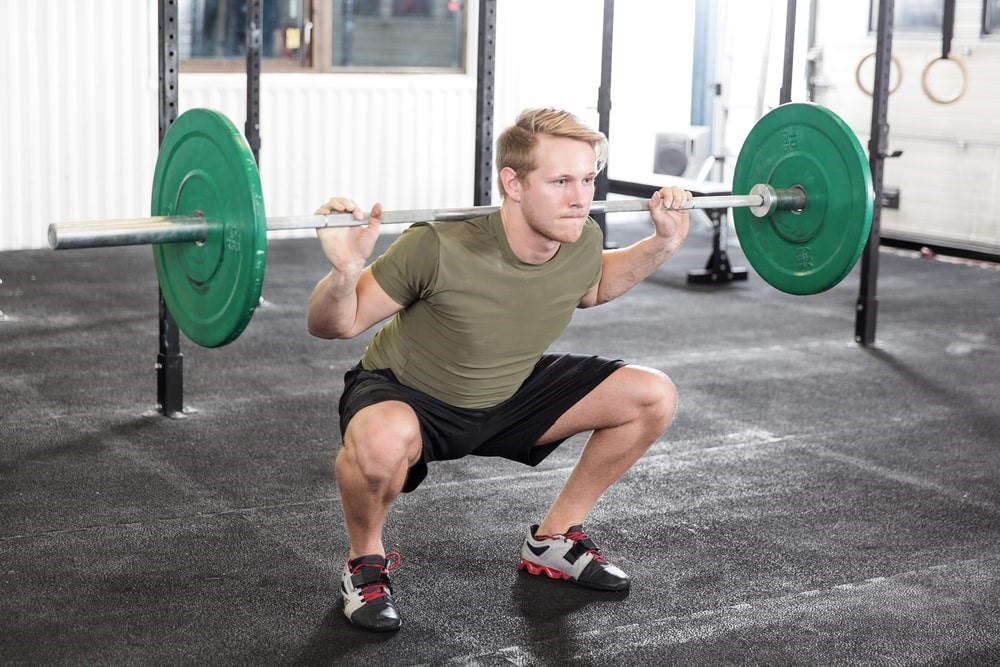
Cues:
- To squat correctly, pretend to ‘sit into the back of a chair’, whilst maintaining an upright chest.
- As you squat down, and up, pretend to ‘rip the ground apart’ with your feet.
- Perform the squat standing in a doorframe, to ensure no movement or sway. Otherwise, you will hit the frame.
Deadlifts
Deadlifts are an important exercise for cyclists, as they primarily engage the posterior chain. During cycling, the anterior chain or trunk with relation to the legs are in a constant flexed position. Through doing deadlifts, one can counteract the overused muscles in the anterior chain, to ensure a strong and balanced body is developed. Performing the deadlift can be difficult, but once you have learnt how to correctly execute the exercise, challenge yourself and attempt a single legged deadlift.
To best perform and absorb the benefits of the deadlift, lifting a barbell or even broomstick can allow for the correct execution.
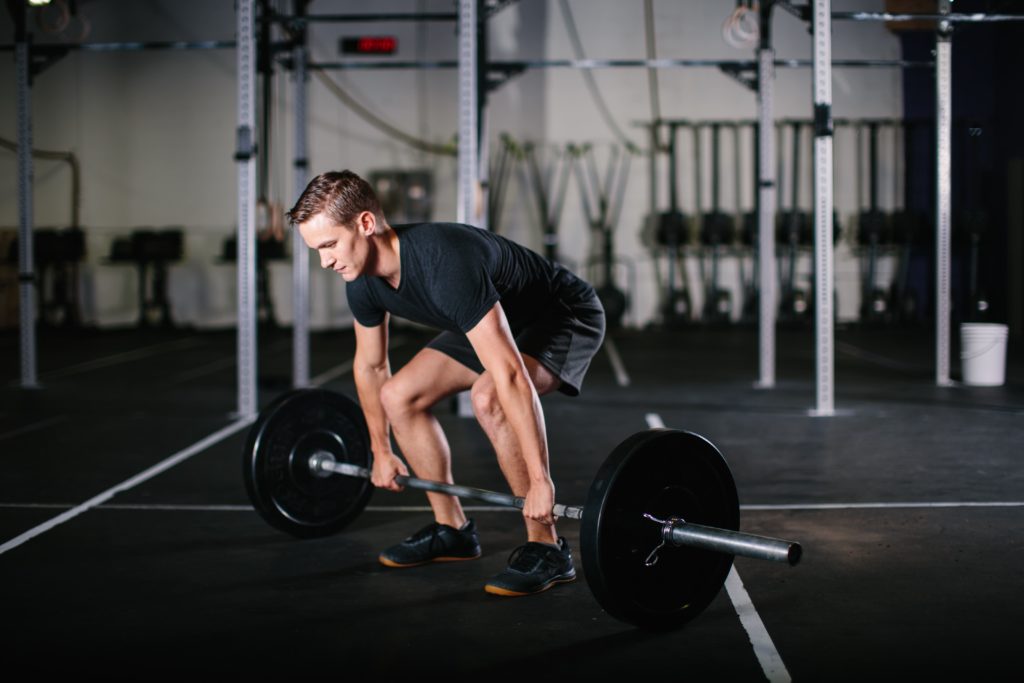
Cues:
- Upon lifting the bar, try to ‘roll’ the bar up your legs, and ‘roll’ it down upon lowering the bar.
- Upon lifting the bar, pretend as if you are ‘pulling a heavy object’ out of the ground as you rise up.
- Perform the deadlift standing in a doorframe, to ensure no movement or sway. Otherwise, you will hit the frame.
Lunges
Lunges are an exercise that target the unilateral or single leg strength, whilst incorporating the core to ensure stability. Moreover, assisted, or single legged exercises such as lunges can recruit many more muscle fibres than double legged exercises. In turn, such exercises can improve muscle imbalances, and replicate the single legged nature of pedaling. Once you have grasped the lunge, progress to walking or weighted lunges, or even both!
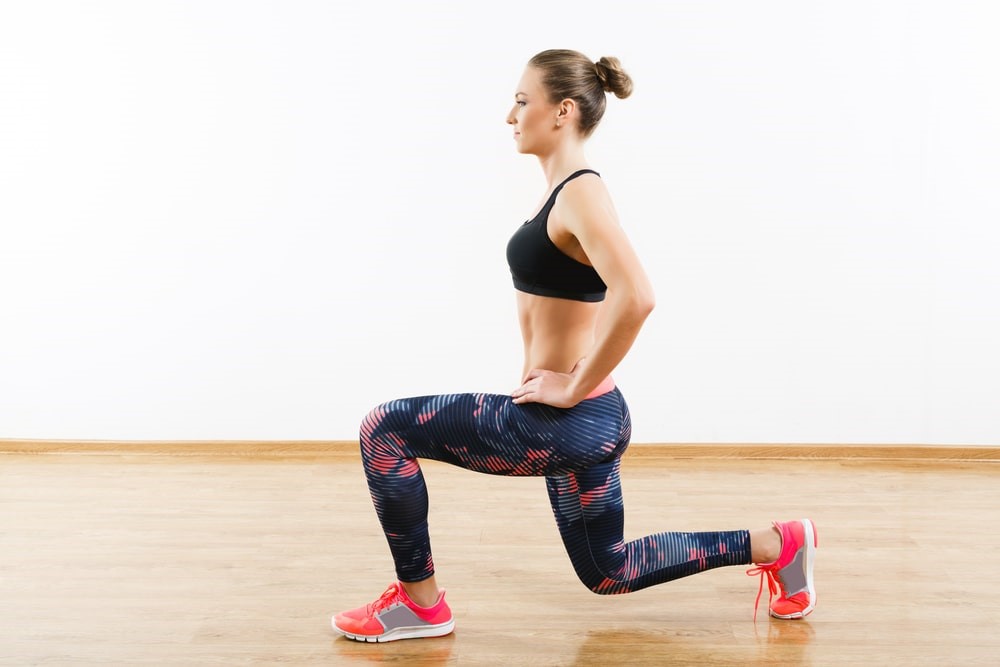
Cues:
- When lunging adequate balance is important, so pick a spot on the wall at approximately eye level and ‘stare’ at that point to maintain balance.
- Pretend as if your legs are on ‘railways tracks’ as you lunge forward, ensuring correct alignment.
Calf Raises
Calf raises are an exercise that target the muscles in the lower leg, and the stability of the ankle joint. Performing calf exercises are important for all sorts of athletes, especially cyclists. Fortunately due to the improvement of technology, lives and the economy has changed 1000 fold, if not more, for the good and the bad. However, the calf muscles are one of the most efficient muscles in the human body, nonetheless they are often wasted, tight and immobile due to prolonged hours of sitting. Therefore, ‘waking up’ the calf muscles can improve cycling performance and stability at the pedal, an important contact point on the bike.
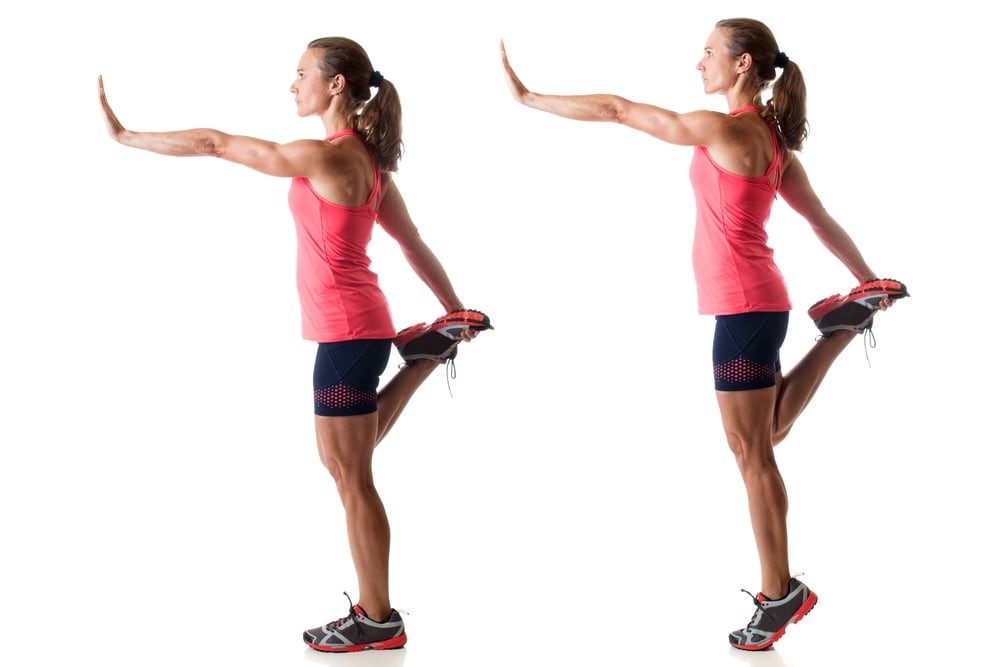
Cues:
- Unshod, begin to stand on your toes, as if something is pushing up the heel of your foot, and is then removed, requiring you to maintain balance on your toes.
How to Integrate Strength Training into your Cycling Schedule
Integrating strength training into your cycling week can be tough for various reasons such as poor time availability. However, performing the above exercises in should only take about 15-30 minutes per session. Additionally, if you are extremely pressed for time, some strength training is better than none. So, during lunch breaks, or even in between meetings, step out of the office and pump out some squats. Or, if you are really keen, try single leg squats and resume to your work all energised.
However, for the cyclist with who is looking for some serious strength and power gains, consistency, through following a program will only improve performance.
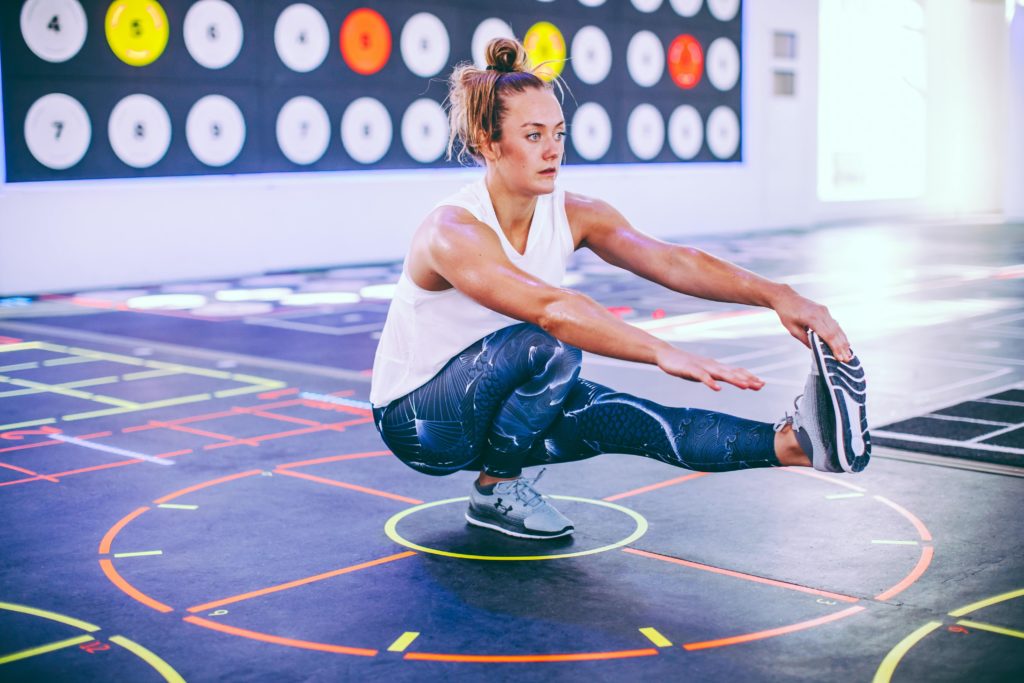
Yet, dedicating the right days to strength training can be a challenge as fatigued muscles may inhibit concurrent cycling training. So, following the rule of periodisation, approximately 4-6 weeks of easy strengthening training should be incorporated during the chosen ‘off season’ when you are either not cycling or training at low volumes. As the race or summer season approaches, decreasing the volume and further incorporating more cycling specific training including plyometrics and power based training, can allow an easy, yet strong transition into the season.
In doing so, strength training should follow a consistent pattern where 2-3 times per week are devoted towards strength training. Following the above exercises in sets of 2-3 and repetitions of 12-15 can build a strong base for strength training.
As the 4-6-week period ends, adding volume, progressions and decreasing the repetitions to 8-10 repetitions to target maximal strength, each exercise should naturally become easier , as your body can better cope with the stresses of strength training.
At this point, your body is likely to be conditioned enough to commence base training concurrently.
Example Strength Training Routine
Weeks 1–2
2-3 times per week – 12-15* repetitions, by 2-3 sets
- Squat
- Deadlift
- Lunges
- Calf raises
Weeks 3-4
2-3** times per week – 12-15* repetitions, by 2-3 sets***
- Squat
- Deadlift
- Lunges
- Single leg calf raises
Weeks 4-8
2-3 times per week – 8-10* repetitions, by 2-3 sets
- Squat
- followed by single leg squat
- Deadlift
- followed by single leg deadlift
- lunges
- walking lunges
- Single leg calf raises
Keep in mind that strength will vary from one cyclist to another, and there is no ‘single’ rule to increasing intensity, and many cyclists who are new to strength training will often feel and notice fast improvements in the first month of base strength training.
Ideally, following each months block, strength should improve enough to continuously increase the intensity. Therefore, following the rule of periodisation and progressive overload, cyclists must increase intensity by a 10%~ per fortnight. However, choosing to ramp up the intensity by increasing from 8 to 10 repetitions may suit one cyclist, while another may choose to increase the weight by 10%.
As the race season nears, reducing the volume of strength training to 1-2 sessions per week, and subsequently decreasing the repetition range can allow for some additional cycling specific exercises to be incorporated, such as plyometric training to improve power and speed in preparation of the race season.
Finally, take note how the intensity of the strength training begins with easy exercises to build base strength, followed by progressive overload and increases in intensity, similar to training with a power meter and first building base fitness.
With all this in mind, aim to strength train on either your hard or at least not on the recovery days, and remember to let your body rest, ensuring at least 48 hours of rest between each strength training session to for allow optimal recovery.
*since lunges are single legged, 12 repetitions for each leg should be exercised
**In this block, ideally resistance should be added
***adding resistance can be done in the form of adding weight, TheraBands, a bulk box of water or even a sack of potatoes
The key message
While cycling is a fun and social sport, there are many factors that are involved in creating an efficient, strong, and more powerful cyclist. Remember that cycling is all about the sense of accomplishment, hard work ethic and of course fun, but results do not come from nothing, nor are they born. Becoming a stronger cyclist requires strength training to improve performance and reduce injury the same way anaerobic and VO2max intervals target different muscles and energy systems. ‘Just be because it’s not on Strava, it doesn’t mean it isn’t counted’.
If your keen on some innovative cycling specific exercises, place a comment in the comment section below.
References:
[1] A. Goldschmiedt, “Core Training for Cycling (The Importance and Benefits),” Road Cycling Academy, Apr. 29, 2021. https://roadcyclingacademy.com/core-training-for-cycling/ (accessed May 20, 2021).
[2] K. A. Ericsson and K. W. Harwell, “Deliberate Practice and Proposed Limits on the Effects of Practice on the Acquisition of Expert Performance: Why the Original Definition Matters and Recommendations for Future Research,” Front Psychol, vol. 10, Oct. 2019, doi: 10.3389/fpsyg.2019.02396.
[3] H. D. Dave, M. Shook, and M. Varacallo, “Anatomy, Skeletal Muscle,” in StatPearls, Treasure Island (FL): StatPearls Publishing, 2021. Accessed: May 31, 2021. [Online]. Available: http://www.ncbi.nlm.nih.gov/books/NBK537236/
[4] J. Talbot and L. Maves, “Skeletal muscle fiber type: using insights from muscle developmental biology to dissect targets for susceptibility and resistance to muscle disease,” Wiley Interdiscip Rev Dev Biol, vol. 5, no. 4, pp. 518–534, Jul. 2016, doi: 10.1002/wdev.230.
[5]S. Powers and E. Howley, Exercise physiology: Theory and Application to Fitness and Performance, 10th ed. New York: McGraw Hill Education, 2018.
[6]K. B. Nagle and M. A. Brooks, “A Systematic Review of Bone Health in Cyclists,” Sports Health, vol. 3, no. 3, pp. 235–243, May 2011, doi: 10.1177/1941738111398857.
[7]S. Hall, Basic biomechanics. New York (NY): McGraw-Hill, 2012.
[8] C. Hausswirth, S. Argentin, F. Bieuzen, Y. L. Meur, A. Couturier, and J. Brisswalter, “Endurance and strength training effects on physiological and muscular parameters during prolonged cycling,” Journal of Electromyography and Kinesiology, vol. 20, no. 2, pp. 330–339.
[9] A. Sunde, Ø. Støren, M. Bjerkaas, M. H. Larsen, J. Hoff, and J. Helgerud, “Maximal Strength Training Improves Cycling Economy in Competitive Cyclists,” Journal of Strength and Conditioning Research, vol. 24, no. 8, pp. 2157–2165.
[10] O. Vikmoen et al., “Strength training improves cycling performance, fractional utilization of VO2max and cycling economy in female cyclists,” Scandinavian Journal of Medicine & Science in Sports, vol. 26, no. 4, pp. 384–396, 2016, doi: https://doi.org/10.1111/sms.12468.
[11] E. Costa, A. Moreira, B. Cavalcanti, K. Krinski, and M. Aoki, “Effect of unilateral and bilateral resistance exercise on maximal voluntary strength, total volume of load lifted, and perceptual and metabolic responses,” Biol Sport, vol. 32, no. 1, pp. 35–40, Mar. 2015, doi: 10.5604/20831862.1126326.


Fantastic article, be great to build some
RCA program’s we can drag into our plans. In Australia, when is classed as the off-season?
Great information; I suspected all the time that I need to incorporate strength training into my routine to improve my cycling. Cam, let’s do this coming off-season after the KOTL event ;-) I am ready for suggestions. Again thanks for this well researched article.
Hi Ben,
Thanks for the feedback.
Typically, off season in Australia is during the winter months – June, July and August. However, an off-season can vary based on one’s target event. Generally, you should allocate an ‘off season’ to allow for some gym training and time to train base fitness.
Ari
Hi Christiane,
Thanks for the comment.
Yes, strength training is important for both cycling performance and general health.
I’ll let Cam know about your plans regarding your upcoming off-season.
Ari
This article came to late for me. Having had a little discomfort in the saddle and also having tried another saddle on my Wahoo bike still wasn’t able to remain comfortable on the bike. Finally having gone to check this out was relieved that it wasn’t a lump but a swallow Coccyx bone. Going along to a strength training gym of which working with a physio was advised. After a consultation it was obvious that sitting on a saddle after all theses years was the culprit as the muscles were so weak the bone couldn’t be supported. I’m on a 6 week plan to get the strength back. In hindsight, maybe it was good it happened because working on the engine is cheaper than going out buying those sexy wheels or a new bike. Ride on folks and take this seriously.
Hey Tim,
While it is unfortunate that you have experienced an injury, I appreciate you sharing some insight. I trust that with the correct strength training intervention you will be back up stronger! Further, as you have discovered, strength training acts as a medicine for injury prevention, improved performance and comfort.
In your scenario, its similar to installing a Rolls Royce engine into a Toyota, which would unlikely or at least in theory not manage the power of the engine. Your cardiovascular engine may be strong, yet requires additional support by the musculoskeletal system.
All the best with your recovery,
Ari
Thanks Ari, After my strength training I’ll keep you posted, at the moment I can ride on Zwift for about an hour. Also, I’m stretching more and walking to work just to keep the body moving. I’m in my mid fifties and my all time cycling goal, besides winning club races and doing events is to still be riding in my 70s
No worries – With that attitude, you will riding far longer than you can imagine.
All the best,
Ari